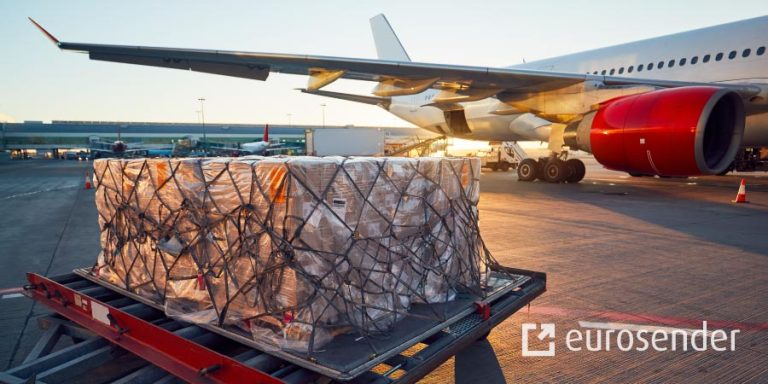Shipping Lead Time: What It Is & How to Optimise It
TL;DR
- Shipping lead time includes order processing, shipping, handling, and delivery; reducing it improves customer satisfaction and competitiveness.
- The difference – Shipping lead time covers the entire process from order to delivery, while delivery time focuses only on the transit period.
- Reducing lead time – Use advanced scheduling, automate supply chains, consolidate suppliers, and create lead time contracts.
- Optimisation tips – Eurosender offers fast solutions with dedicated couriers, competitive rates, and flexible delivery options.
The shipping or delivery lead time means the period between when an order is placed and when the consignee receives the goods. In logistics, the lead time includes preparation, shipping, processing, handling, and delivery. Read on to find out why the shipping lead time is important, and how to optimise it while reducing costs.
Create an account for free!
Why is the shipping lead time important?
Having an accurate shipping lead time is an important part of the delivery process because it streamlines many operations and influences planning. The faster you can get your orders out the door and to your customers, the better. Delivery speed is a major factor in a buyer’s decision-making process.
However, one small slip in any of your logistics operations may lead to delayed delivery and even penalisation in more serious cases.
The goal of companies should be to reduce the shipping lead time in order to be able to provide efficient delivery solutions and increase customer satisfaction. This can be achieved with some strategic changes to your logistics processes, which we will discuss later. Most importantly, the reduction of the shipping lead time is one of the easiest ways to gain an edge over competitors.
Read also:
- Shipping solutions for online sellers
- Setting up logistics processes for e-commerce stores
- International shipping for e-commerce
What is the difference between shipping lead time and delivery time?
Now that you understand the basic of what is lead time, it is important to point out that there are different types of lead time in the industry, depending on what exactly is being considered.
Lead time is a more general term than shipping lead time. The basic difference between shipping lead time and delivery time is that the shipping lead time refers to the entire process from order confirmation to delivery, while the estimated delivery time refers only to the transport period.
How does the shipping lead time affect freight rates?
In business, time is money. Providing more notice or lead time for a shipment could help keep your costs at a minimum. This is because it will be easier for your third-party logistics provider (3PL) to:
- Negotiate lower rates
- Secure carriers with higher service levels
- Find ways to save costs and improve efficiency
- Schedule ideal delivery times
If the order is made last minute, delivery options are limited, and rates are usually higher. On the other hand, if your logistics provider has more time to plan (at least 72 hours), they can suggest the most cost-effective solutions. An example would be switching from a road freight service to rail freight, which has a longer transit time but is usually much cheaper.
You may also be interested in:
- How to calculate freight quotes
- How to get pallet shipping quotes
- How to calculate freight transit times
How is the lead time calculated for shipping?
The shipping lead time is usually calculated with this simple formula:
Lead time = Order delivery date – order request date
The lead time above is the number of calendar days from when the order was placed until it was delivered to the recipient. This calculation is based on each part of the shipment journey from order entry to the final delivery.
In practice, shipping lead times can be accurately calculated based on past averages for similar orders.
How can I reduce the shipping lead time?
Advanced scheduling is a step in the right direction towards optimising lead times for shipping and operations. Here are a few popular techniques for reducing lead shipping times:
- Lead time contracts with suppliers. This is an excellent approach to reduce shipping lead times as both parties agree on the terms, and you have a fallback in case of delays.
- Simplify your supply chain. Automation and inventory management systems are a great way to save on resources and reduce shipping lead times. They can also eliminate mistakes.
- Consolidate your suppliers. Collaborating with one or two suppliers instead of multiple suppliers means that orders take less time be processed, and there is less chance for error.
- Use a reliable shipping platform like Eurosender. With our cutting-edge logistics dashboard and tailored solutions, you can have full control over your shipments and get expert advice on how to optimise your deliveries. Create a business account to unlock exclusive discounts and features.
How Eurosender can help reduce shipping lead time
We work with reliable couriers and offer some of the most competitive rates on the market. If you want a fast and simple solution with minimal lead time, book a Dedicated Courier Service and get the following:
- Collection in 2-3 hours after order confirmation, available from most European cities.
- No packaging restrictions – the van is reserved for you, so you can save time if needed.
- Direct transport from collection to delivery, with no stops or vehicle changes.
- Service available during weekends on request.
Contact our logistics specialists to explore the options on how to optimise your logistics.
Interested in learning more about pallet and freight shipping? Check all our articles about pallet deliveries.
Create an account for free!
About the author
Marcel Nahtigal is Head of Marketing at Eurosender, specializing in digital strategies to enhance customer connections in logistics.






